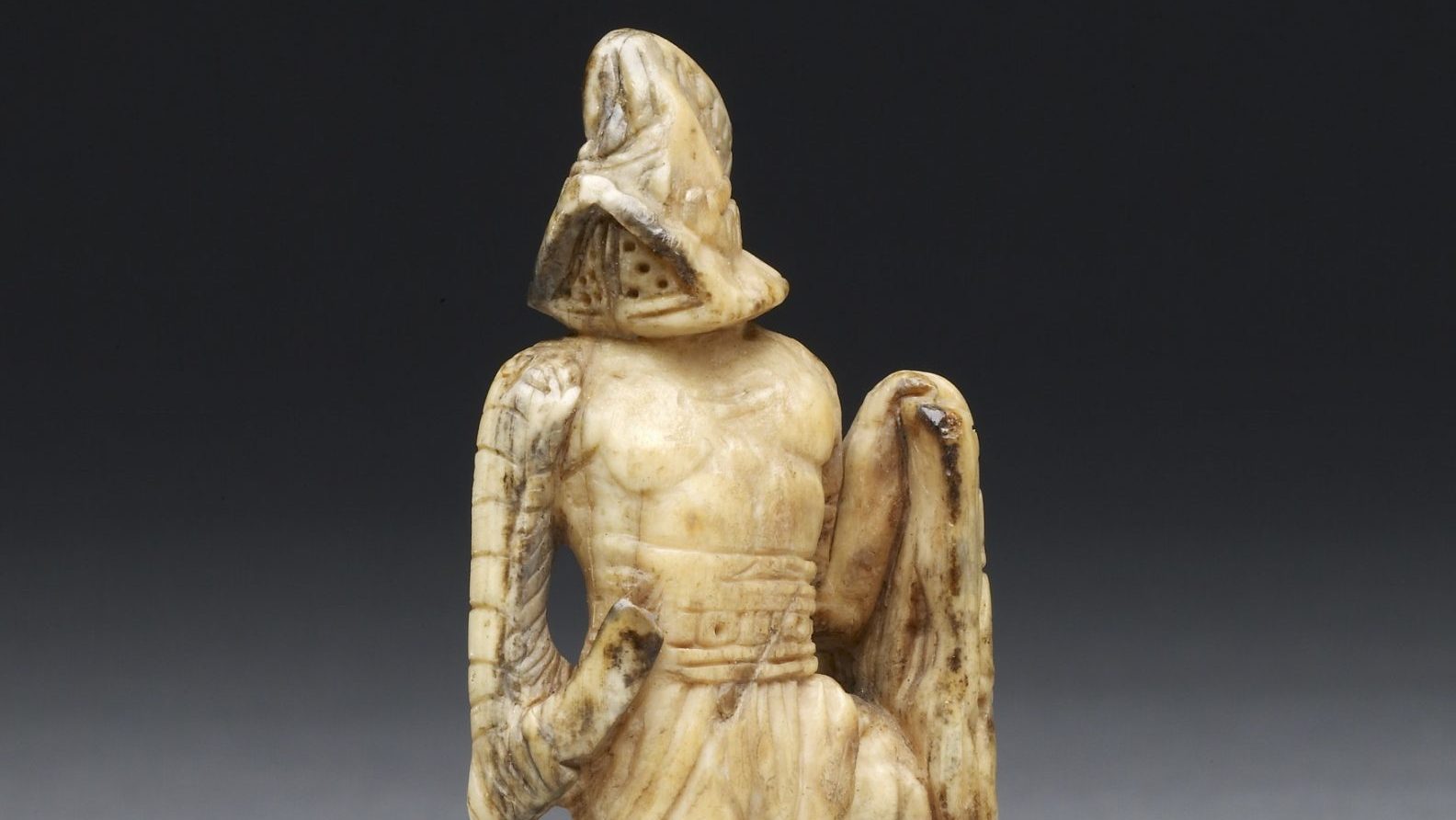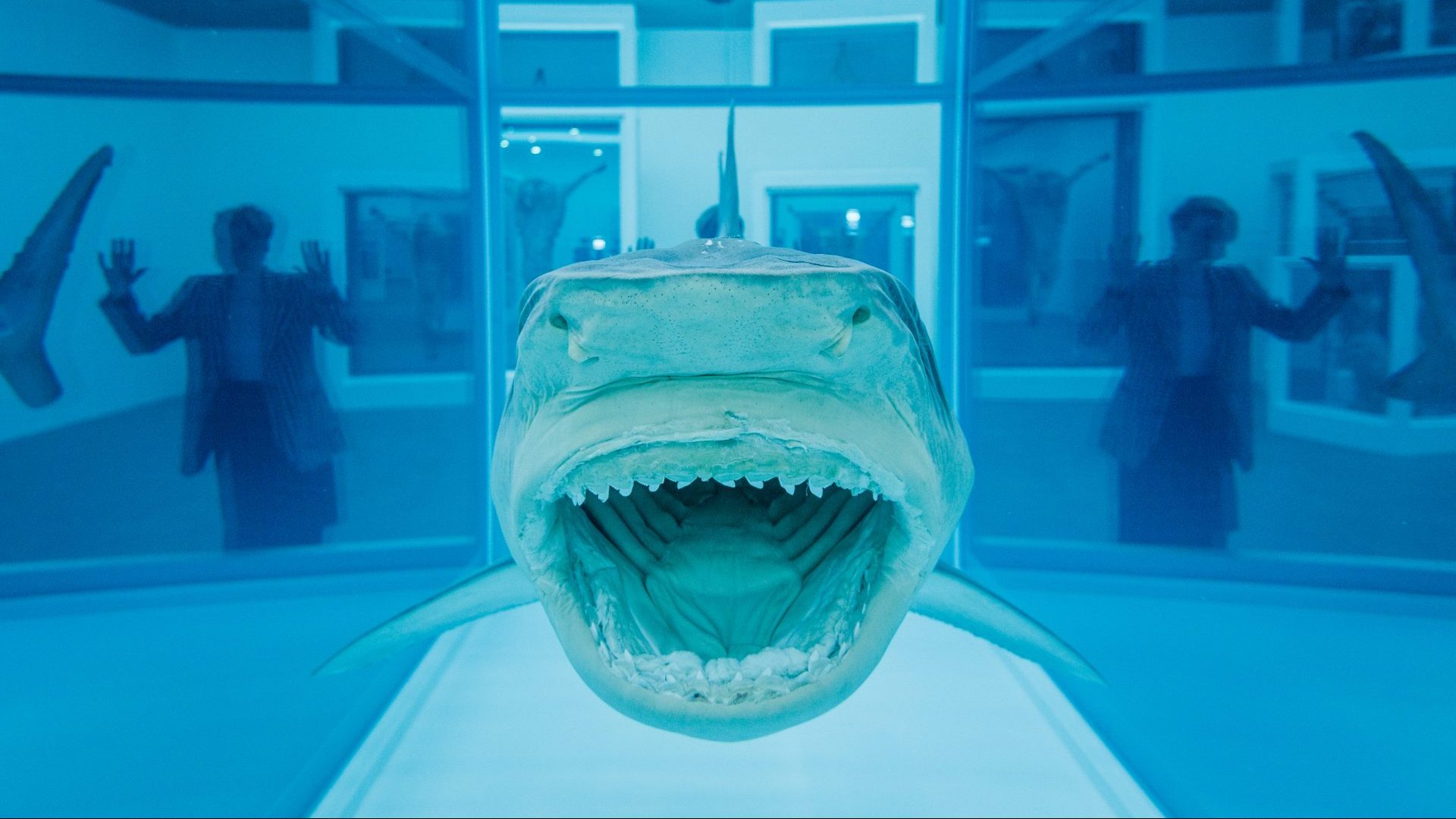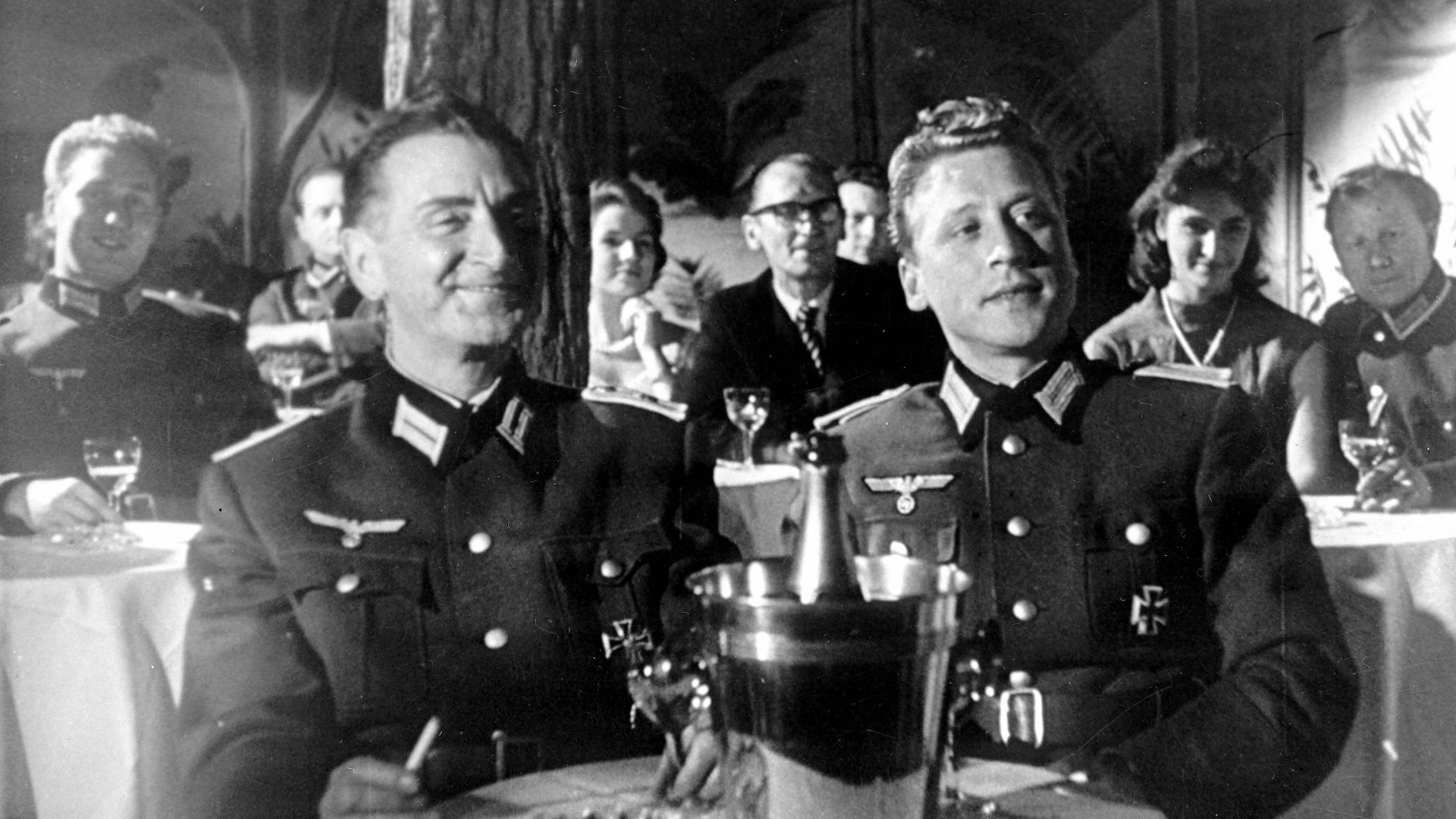Today they hold shows and win applause by slaying with a turn of the thumb whomsoever the mob bids them slay.
– Juvenal
There were 80 of them in the grave in York, and 30 had been decapitated. Their heads were placed at their feet in a mark of respect.
The skeletons at 3 Driffield Terrace, unearthed in 2004-05 to the south of what was once a Roman civil settlement and close to a major Roman road leading south-west to Tadcaster, were taller than the average Briton in ancient Roman times. They showed signs of healed wounds inflicted over a long period. One had deep bite marks from a large carnivore, possibly a bear, lion or tiger.
Six of the skeletons were closely studied. Teeth analysis showed they had travelled from north Africa, the southern Mediterranean and central Europe. The skeletons had well-developed bodies, indicating a good diet and exercise. Some had one arm longer in length, suggesting repetitive sword training prior to adult maturity.
The best evidence we have that gladiatorial combat took place in Roman Britain is a bronze, tin-plated gladiator helmet, ploughed up in a field in Hawkedon, Suffolk in 1965. Made in southern Italy, it dates to AD160-200. But the discoveries at Driffield Terrace provide more signifiers that Rome’s spectacle of bloody public entertainment travelled across Europe to Britain.
“Gladiator” derives from the word gladius, meaning sword, and the origins of the Roman taste for combat as spectacle were linked to funerary rites, possibly Etruscan. The Romans copied this as part of the funeral ceremony for the wealthy, the mortal blood spectacle intended as an offering to the gods of the underworld. The Roman historian Livy set down an account of three pairs of gladiators in combat at a funeral in 264BC.
This funeral rite developed into after-dinner entertainment. One writer commented that after an evening of feasting they called in the gladiators, “no sooner did one have his throat cut than the masters applauded with delight at this fight”. Evidence shows this bloodsport was brought to Britain during the occupation of the province after AD43.
Gladiators were a mixed bunch, perhaps criminals, prisoners of war, slaves, or military veterans wanting to make money. They were divided into untrained ad gladium, armed with a sword as slaughter-fodder for the arena; and ad ludum, the ones trained professionally in the gladiator schools.
There were female gladiators, too. The Roman writer Juvenal in his Satires criticised one senator’s wife who had left the family home, and her children, to join a gladiatorial touring company.
At least 17 Roman amphitheatres have been unearthed around Britain, from Newstead in Scotland to the Guildhall, London and Richborough on England’s south coast. Artefacts discovered at these sites suggest that gladiatorial entertainments took place at all of them. One of the most important artefacts is the “Colchester Vase”, which dates from around AD175, discovered in 1853 in a Roman-era grave in Colchester (Camulodunum).
Nine inches in height and made from local clay, it depicts combat between a secutor, a chaser gladiator wearing little protective armour except a distinctive helmet and a sword; and a retiarius who would carry a weighted “fishing” net, trident and dagger.
Their names, Memnon and Valentinus, probably stage names, were incised into the decorated surface of the vase at the time of firing the local clay, suggesting it was created to mark a specific gladiatorial spectacle. When the “vase” was discovered it contained cremated bones, added at a later date.
A partnership between the British Museum and the Colchester and Ipswich Museums has analysed Britain’s archaeological record, and the result of their research is Gladiators of Britain, a show that runs until April 2026 and will be exhibited in four museums across England.
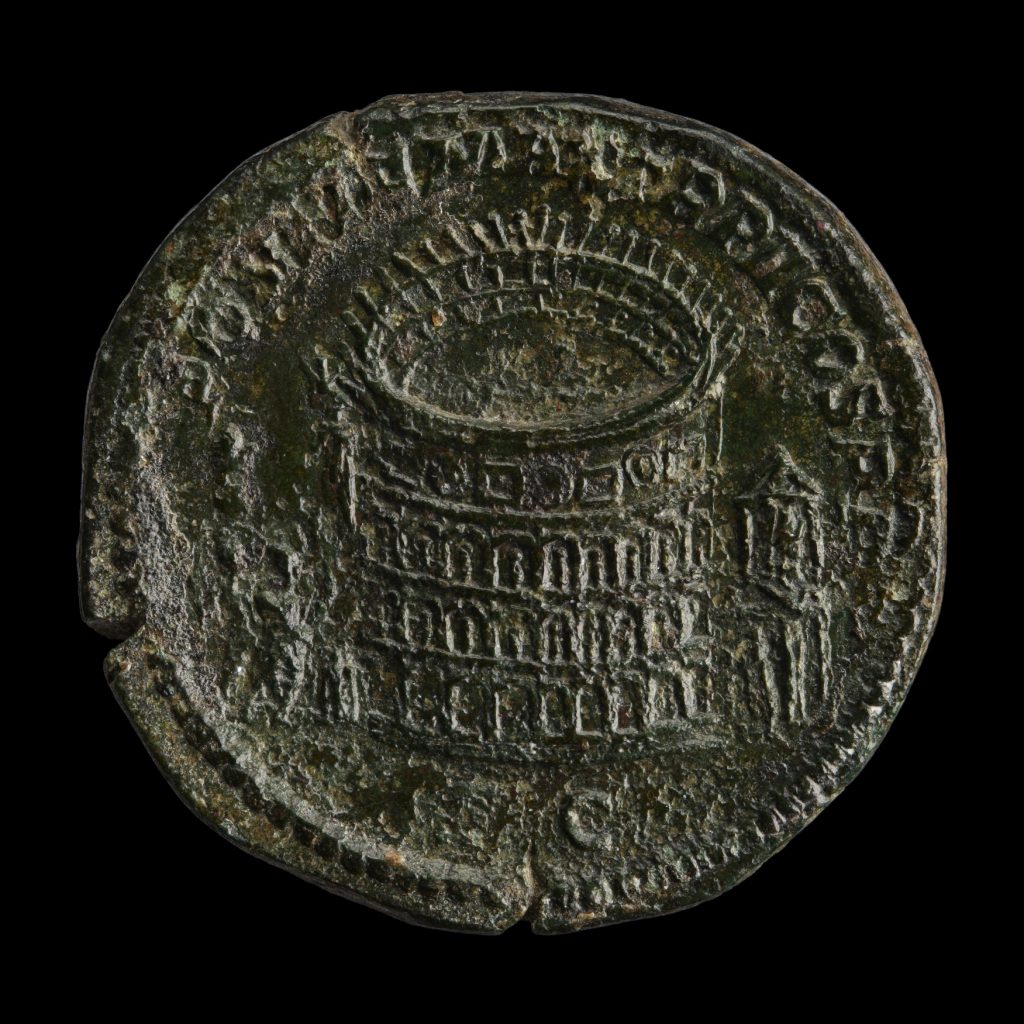
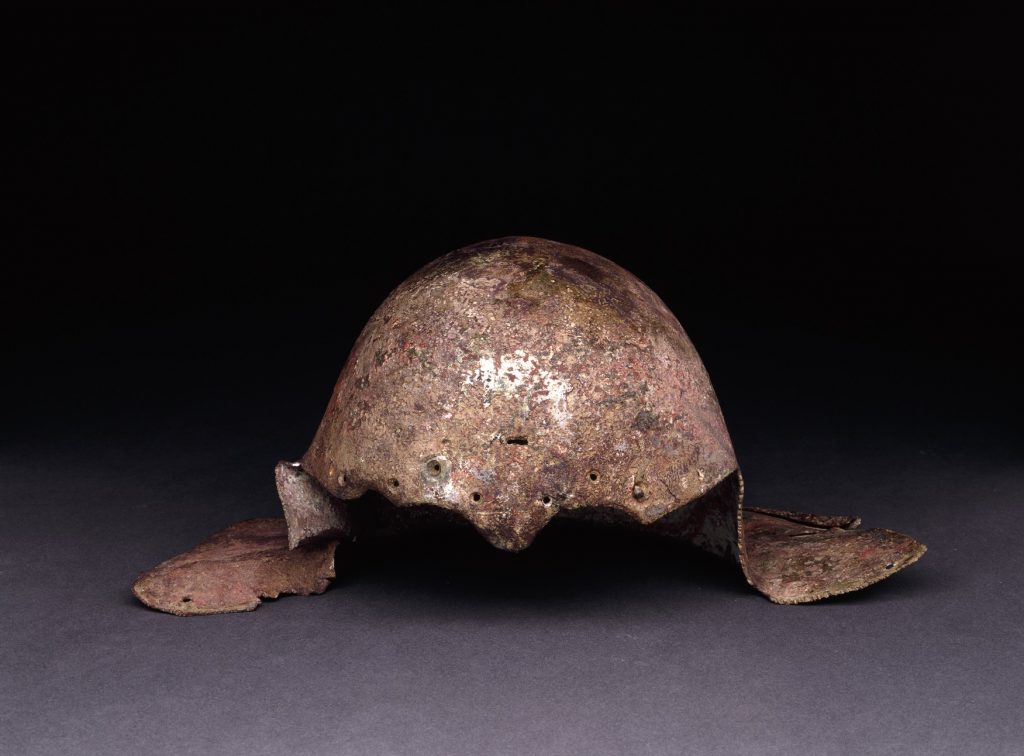
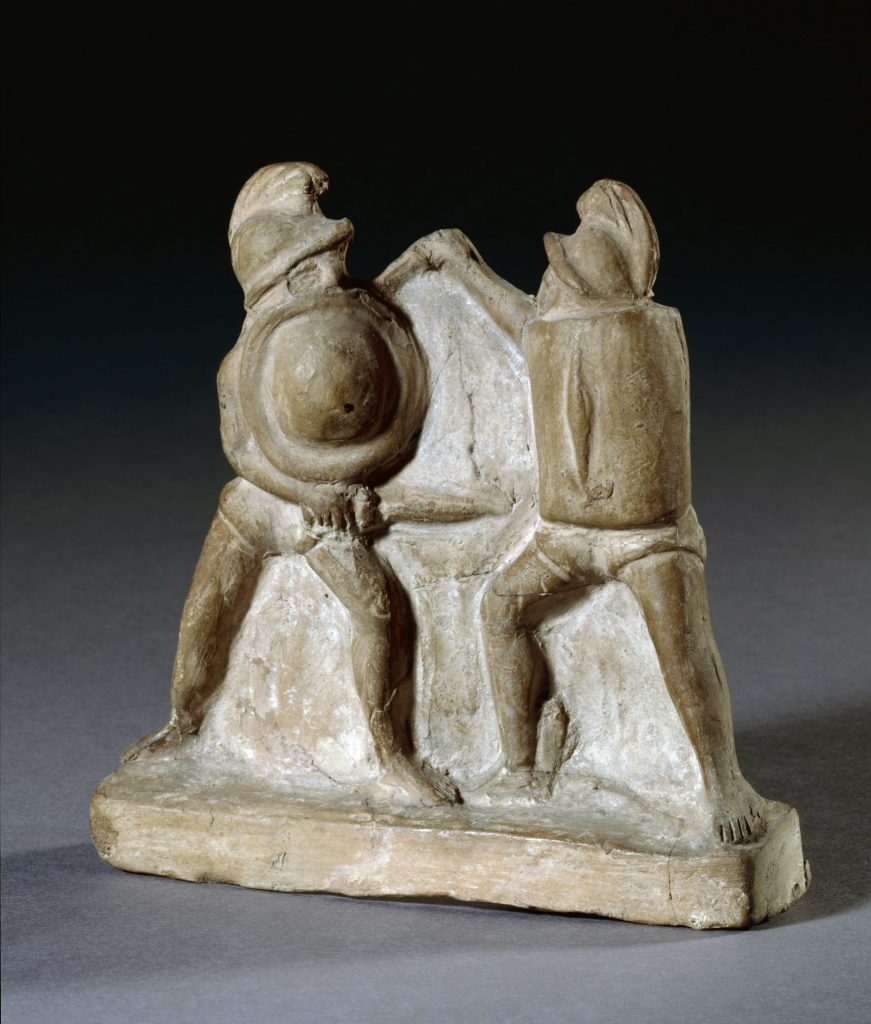
It starts at the Dorset Museum in Dorchester, where it will remain until May 11. The town’s Roman name was Durnovaria, and its earth-made Roman amphitheatre, known as Maumbury Rings, dates to around AD60. From 1908-13, the archaeologist Harold St George Gray excavated the site and found that the Romans had built their arena by remodelling a neolithic henge – a monument that predated the Roman arrival in Britain by well over two millennia.
From Dorchester the exhibition travels to Northampton, Chester and Carlisle, bearing objects on loan from the British Museum and other collections.
The exhibits from the Colchester museum are diverse, and include a lamp in the shape of a murmillo gladiator helmet, slave manacles, Roman tombstones, gladiator-decorated oil lamps, and the Colchester Vase.
These are displayed alongside Roman objects from Dorset museum’s own collection. This includes a letter to the Times, written in 1908 by Thomas Hardy, commenting on the architectural dig of the amphitheatre. In Northampton, Chester and Carlisle, local evidence of gladiators will be shown alongside the travelling core collection.
Death was not inevitable for a gladiator. Training and maintaining gladiators was a large expense for the owner – the lanista – and the commercial pressures of gladiatorial contests meant that no one wanted to lose their fighters. If the crowd demanded a death, the organiser of the games, usually a wealthy local official, would be expected to pay the lanista a large sum of money for the loss of a combatant.
It was rare for gladiators to fight wild animals – the bestiari (wild beast fighters) were trained for that. A contest is depicted on the Colchester Vase, with two named bestiari, Mario and Secundus, fighting a bear.
Two female gladiatrices, known as Amazon and Achillia, fighting as provocatores with swords and shields, were commended for bravery and given a reprieve. A 1st-2nd century marble relief from Halicarnassus, now in the British Museum, depicts them in action.
And thumbs up or down? On the Colchester Vase, Memnon is shown to have had nine successful gladiatorial fights. Valentinus has none, and his finger is raised, to signal defeat. What was the outcome of the 16-minute bout?
Customarily, and contrary to Hollywood legend, thumbs up meant that the victor should kill the defeated gladiator, the mob shouting “iugula” – to cut the throat. Thumbs down meant that the gladiator was severely wounded or near-dead. The mob and Dis Pater – the god of the underworld – would decide his fate.
Gladiators of Britain is at the Dorset Museum & Art Gallery until May 11, Northampton Museum & Art Gallery from May 24 to September 7, the Grosvenor Museum, Chester from September 20 until January 25, 2026 and the Tullie House Museum & Art Gallery, Carlisle from February 7 to April 19 2026
Rosalind Ormiston is an author and art historian

